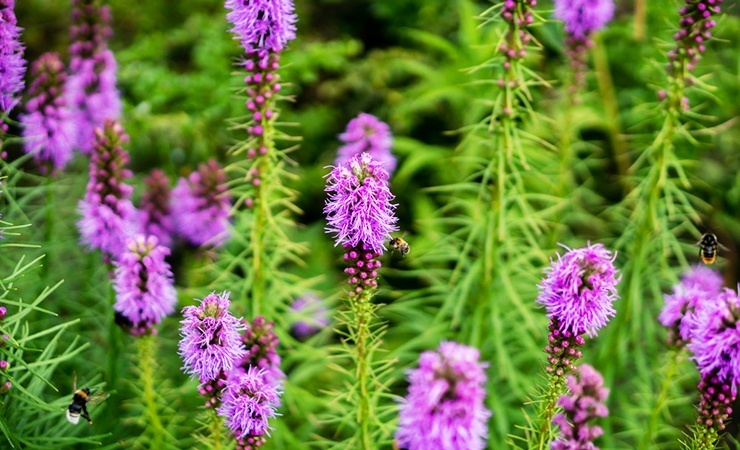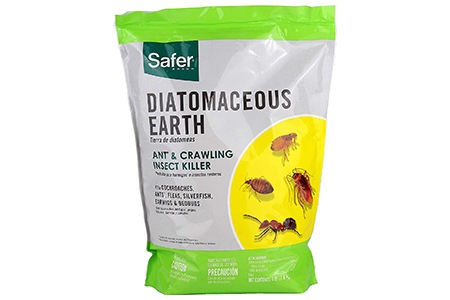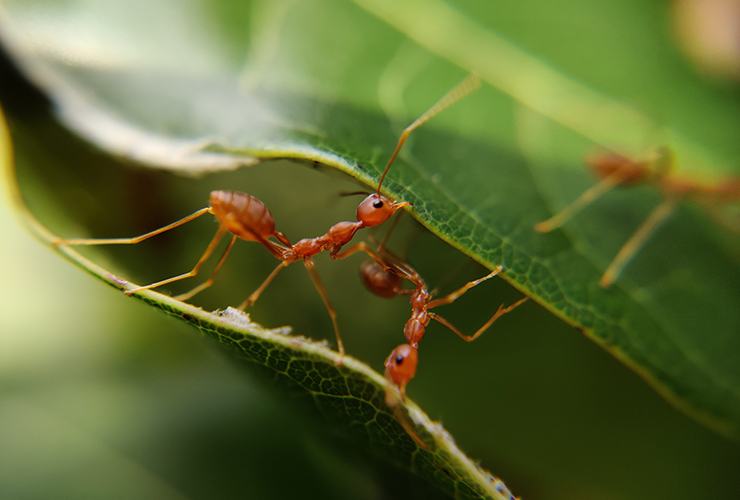6 Plants That Repel Ants Outdoors & Inside Your Home
Author: Jen Worst | Editor: Omar Alonso
Review & Research: Jen Worst & Chris Miller

It’s nice out, you want to enjoy your patio, but you can’t help but notice a never-ending stream of ants crawling around. Sometimes, you’ll feel a little ticket on your leg and there won’t be anything there.
Other times, there will be, and that’s usually when the inspiration hits to start looking for ways to get rid of ants. If you’re a gardener or just someone who enjoys plants, then plants that repel ants are a natural solution to this problem.
If you’ve got an ant problem inside of your home, I don’t recommend turning exclusively to indoor plants that repel ants to help with that. It’s too late for that. Instead, there are some other tips that I’ll share with you shortly for dealing with ants inside your home.
First, let’s talk about plants that repel ants outdoors, because that’s where you can make more of a difference.
Just as a quick note, plants can definitely help with ants in the home and to repel them using their natural scents and oils if you already have the plants, but if your home is infested with ants then I just need to recommend something a little more serious as a remedy for that.
If you’ve got a few ants here and there, by all means get some plants. But if there are carpenter ants drilling through your home’s beams, it’s likely too late for plants to save the day.
Plants That Keep Ants Away From Your Yard & Home
The idea of using all sorts of chemicals to keep ants away makes me uncomfortable at best. I just don’t like the thought of spraying poison into my lawn, let alone into my home. I grow food in my yard, not just for me but for my family and loved ones, so I want to keep it as organic as I possibly can.
Pennyroyal

If you think the leaves on pennyroyal look similar to certain mint leaves, that’s because pennyroyal is a relative of mint. You’ll want to be careful with this one.
It gets recommended a lot so I wanted to include it, simply to mention that this is a toxic plant. If you have kids or pets that might eat it, avoid planting it. There are other options, anyways, like just regular ‘ol mint.
Mint

Peppermint, spearmint, and any other mints you may come across can all help to repel ants by clogging up their sense of smell and making it hard for them to communicate. One easy way to choose the best variety of mint when you’re at a garden store is simply to smell them and see which one seems to give off the strongest scent.
Pop it into your garden, watch it grow like crazy, pluck off the leaves, and put them in the areas where the ants are bothering you. That’s about all there is to it. Just remember that if you put it in a garden bed with other plants, mint will start to take over very quickly if you don’t keep a close eye on it.
Rosemary

Some of the plants I’m going to talk about are very strong-scented. Ants use smell to communicate with one another, so plants that can get in the way of those communications are super useful.
But you don’t always want your home or your yard to smell overly strong, especially if we’re talking about inside your house. In that case, rosemary is a good option because it helps repel ants with the best of ‘em, but it has a much less overpowering scent to it.
Rosemary is a fairly easy plant to grow outdoors, and somewhat tricker to grow indoors. If you have a houseplant collection already and they generally do well, you shouldn’t have too much trouble with rosemary but it’s a bit much to take on for your very first endeavour into houseplants.
If you can grow it outside, do that instead! Then, pluck off little pieces as it grows, and spread them around your home in the problem areas for ants.
Lavender

Lavender is just lovely. It’s got such a strong, intoxicating scent that can fill your whole home. Many people that use lavender do so because it can be very relaxing, especially when it’s used as an essential oil in a diffuser or as a wax melt.
As much as I love to have the smell of lavender filling up my home, that’s just because I'm a human and not an ant. If I was an ant, I would hate lavender! It has very potent-smelling oils even before it’s been processed and concentrated.
Ants don’t like the smell at all, and neither do a number of other household pests including flies, so it’s often cited as one of the best plants that repel mosquitos, too.
Ants use smells to communicate, and not only do they dislike the smell of lavender, but it makes it much harder for them to call over their ant-buddies to tell them about the delicious crumbs they found on your floor.
All types of lavender likes to have a lot of bright daylight sun to grow. It likes a bit of air flow, too. Some people will ensure to have a fan inside the room that they grow lavender, if they’re growing it indoors. Outside, you don’t have to worry about this.
Sage

Sage is fragrant, and an interesting herb to cook with, too. It’ll grow just fine in any herb garden type of setting, basically any way that you’d grow things like dill, basil, parsley, and so on. You can grow sage in your windowsill, outdoors, or using an artificial light.
A great way to use sage is to ground it up into a powder and sprinkle it where the ants are. You could even mix it in with diatomaceous earth, which we’ll discuss after we talk about catnip. Keeping it in the window sill or even under the cabinets can help keep those annoying tiny ants in your kitchen around the sink from even coming inside in the first place.
Catnip

Here’s another popular option when ants are a problem on your property. If you have a pet cat, they’ll be very into this idea. Even if you don’t have a cat, you’ll likely be the hero of any friends’ cats that you decide to bestow a little gift upon.
In any case, we’re not here to talk about our feline friends at the moment, we’re here to get rid of an ant infestation, and catnip will help you do just that.
Catnip grows best in a sunny area, and it’s not very difficult to grow in doors, and it’s even easier to grow outdoors. If you’ve got a cat around the home, you may want to be a little more mindful of where you plant this.
More than a handful of people have heard that crash sound, gone running to see what happened, only to discover their cat innocently playing in the spilled dirt of the catnip plant they knocked over.
Alternatives to Indoor Plants that Repel Ants
My best trick for keeping ants out of your home, or dealing with the ones that are already inside of your home, is not to use plants on their own. The first thing I like to do is to see if I can determine how the ants are getting inside.
If I can find their path (they often stick to the same path), I’ll sprinkle some cayenne pepper and that seems to do a pretty good job of keeping them away. I guess they don’t like spicy food.
Another product that works great is called diatomaceous earth. It’s made by grounding up the fossils from little sea creatures. When the ants step on the diatomaceous earth, it creates little microscopic cuts on them and without being too graphic, let’s just say that after they walk through it, they won’t be walking much longer.
Using Cayenne & Diatomaceous Earth to Repel Ants

You can put cayenne pepper powder and diatomaceous earth near your doors and window sills, and even outside of your home. I’ve made a perimeter around the house with it before, with positive results.
If you know where the ants are going inside your home (maybe there’s a food source for them?), you can also sprinkle both powders near that. Eliminating the food source that the ants are enjoying, of course, is another essential course of action.
I tend to think that the D.E. works better for repelling ants than the cayenne, because it doesn’t just scare them away but it actually kills them in the process. Having said that, some people like to mix both powders together.
I’ve done this, but I’m not entirely sure if it’s better or not. If the cayenne scares away the ants, then the D.E. isn’t able to do its job - but the ants are gone, so that’s a win either way, right?
Using Outdoor Plants Indoors
In any case, if you’re still curious about indoor plants for ants, you can basically use any of the same plants that I mentioned above in the outdoor section, as long as you can grow them in a planter on your windowsill or anywhere else in your home that gets enough light.
If you’re growing them outdoors and you decide to move them indoors, be careful because this is a really common way to bring all sorts of pests into the home.
If you’re moving outdoor plants inside, it’s usually a good idea to start with fresh soil, and to dig up the outdoor plant (even if it’s already in a planter) and to use a gentle hose setting to wash away most of the dirt from the doors, because an outdoor plant will have all sorts of things living in the soil that you don’t want to bring into your home.

You can grow the plants outdoors and pluck a few leaves off to spread around your home where you’re noticing ants. If you’re unable to grow plants outside, of course, this won’t really be viable, which could be why you’re looking for indoor plants in the first place.
Either way, after reading through the entirety of this page, you’ll have a great shortlist of strategies and things you can try.
Final Thoughts on Garden Plants that Repel Ants
Whether you decide to grow your plants inside, outdoors, or you decide to go with another method altogether, I can’t wait to hear about what ends up working best for you.
The Farmer’s Almanac, which has been around since the 1800’s, recommends the following plants to help keep ants away: catnip, pennyroyal, peppermint, sage, and spearmint. It’s not a definitive list, of course, as we’ve just finished going over some other plants that they didn’t list.
In any case, I think you should go with at least 3 or 4 of the aforementioned plants that repel ants if you want to increase your chances of getting rid of ants once and for all.
One last thing: If you’ve got carpenter ants in your home, I wouldn’t suggest relying on plants that repel carpenter ants because you’ll want to get rid of them ASAP. You won’t have time to plant something and wait for it to grow or even to see how it works, because these ants are munching away at the foundation of your home right now.
Regular ants are a nuisance, but carpenter ants cause measurable damage and should be taken care of hastily, even if it means having to use some sprays or calling an exterminator. Plants that repel ants can work wonders, but aren’t ideal in an emergency.
You'll Also Enjoy:
- 7 Plants That Repel Fleas & Provide Secondary Benefits You'll Love
- 14 Plants That Repel Spiders Indoors & Outdoors With Little Effort
- Natural Spider Repellent: 9 Safe Spider Deterrents for Your Home & Yard
- How to Get Rid of Fungus Gnats - Quickly & Permanently
- 21 Plants That Repel Ticks: Fresh Smells We Love & Ticks Hate!



